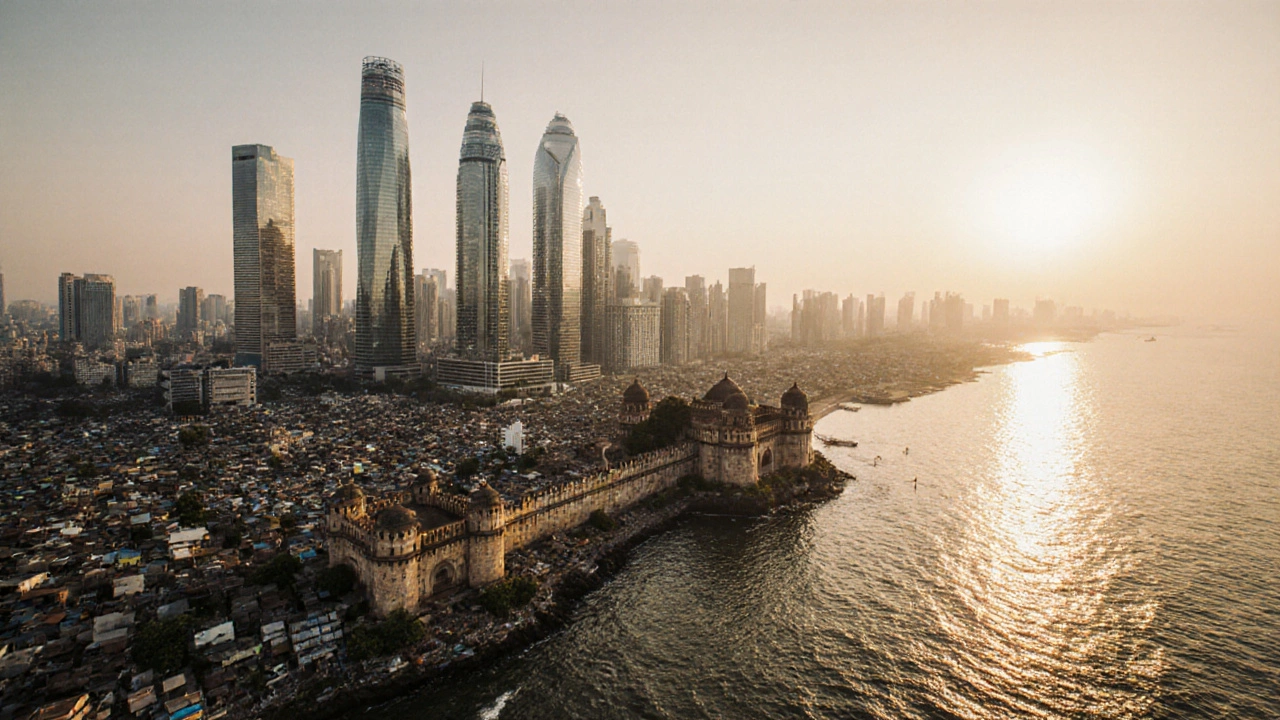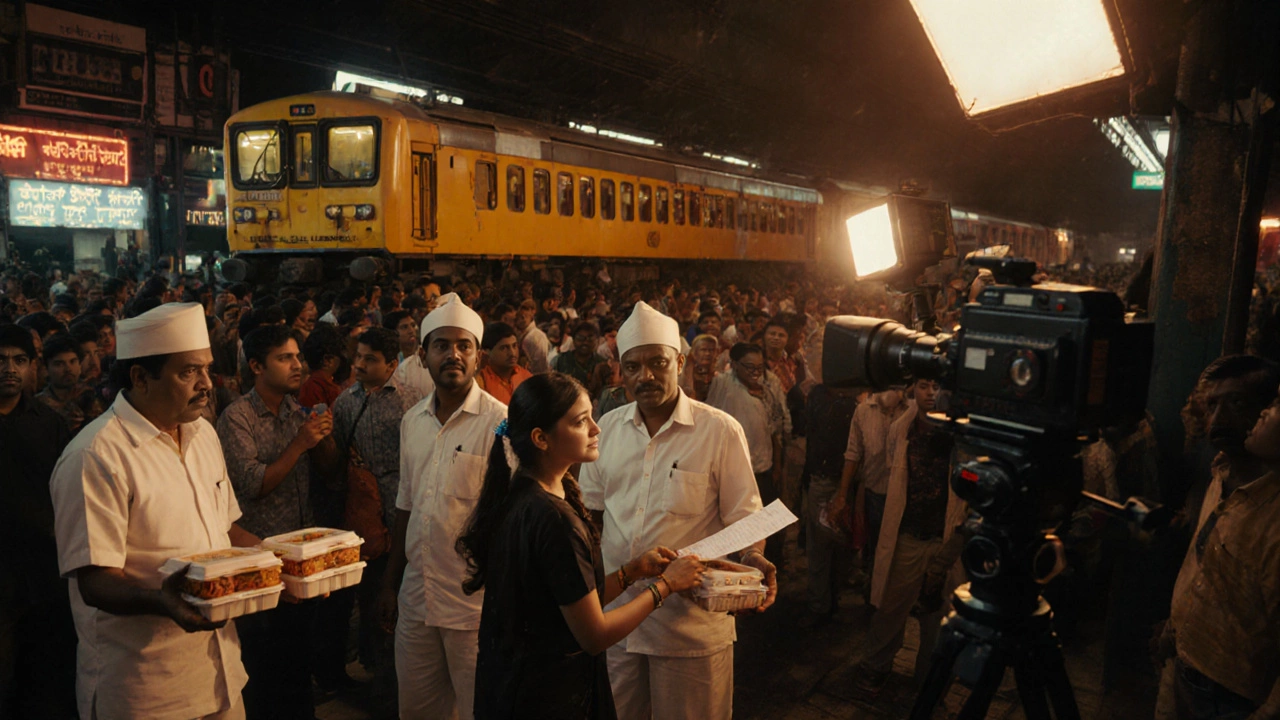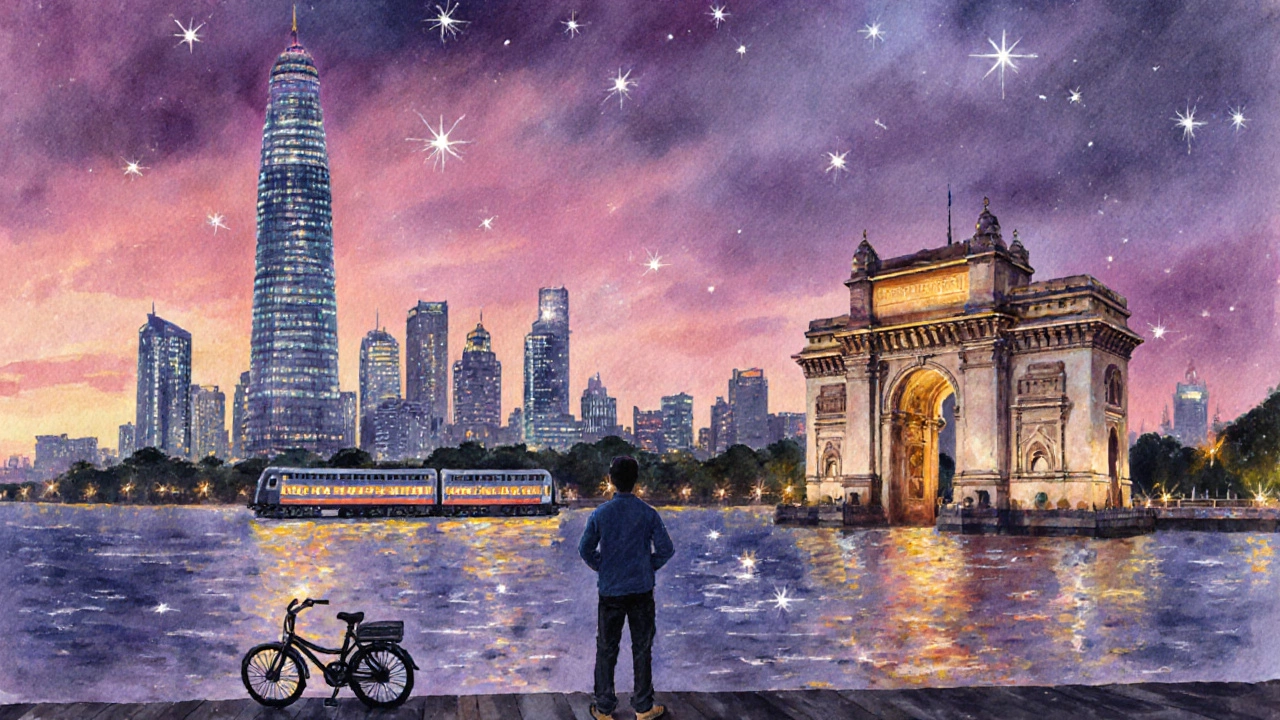Mumbai’s Famous Nickname: The City of Dreams Explained
 Oct, 20 2025
Oct, 20 2025
When you hear the name Mumbai nickname, the phrase “City of Dreams” usually pops up first. But why does India’s bustling metropolis carry that title, and what other names have locals and visitors tossed around over the years? This guide breaks down the history, culture, and everyday quirks that earned Mumbai its famous monikers, and shows how each name reflects a different facet of the city’s identity.
Understanding Mumbai: The Basics
Mumbai is a coastal metropolis on the west coast of Maharashtra, India’s financial powerhouse and home to the nation’s largest population. With over 20 million residents, it’s a patchwork of glass‑shining skyscrapers, crowded slums, historic forts, and bustling markets. Its location on the Indian Ocean gives it a natural harbour that has shaped trade and culture for centuries.
The Birth of the ‘City of Dreams’
The nickname “City of Dreams” didn’t appear overnight. It grew alongside Bollywood’s rise in the 1950s and 60s when aspiring actors, singers, and filmmakers flocked to the city hoping to make it big. The phrase captures the city’s magnetic pull for anyone chasing ambition-whether it’s an entrepreneur seeking venture capital, a student eyeing a top university, or a migrant worker hoping for a better life.
Other Historic and Modern Nicknames
While “City of Dreams” tops the list, Mumbai wears several other names that highlight its multi‑layered character:
- Bombay - The colonial name used until 1995, reflecting its Portuguese and British past.
- Maximum City - Coined by journalist Suketu Mehta to describe the city’s extremes in wealth, poverty, chaos, and creativity.
- Financial Capital of India - Highlights the concentration of banks, stock exchanges, and corporate headquarters.
- Gateway to India - Often confused with the landmark, it signifies the city’s role as a historic entry point for trade.
How These Names Shape Perception
Each nickname frames how visitors, investors, and locals view Mumbai. For a film enthusiast, “Bollywood’s backyard” (though not an official nickname) signals the city’s cultural cachet. For a startup founder, “Maximum City” hints at a fertile, high‑risk market. Understanding the nuance helps you navigate conversations and set expectations when you arrive.

Key Cultural Icons That Reinforce the Nicknames
Several institutions and traditions embody the spirit behind each name:
- Bollywood - The Hindi film industry produces over 1,000 movies a year, creating the glamorous aura that fuels the “City of Dreams” narrative.
- Gateway of India - This iconic arch, built in 1924, welcomed royalty and now greets tourists, symbolizing Mumbai’s historic openness.
- Dabbawalas - The lunchtime lunchbox delivery network, famed for a 0.01% error rate, showcases the city’s efficiency amid chaos.
- Local Trains - Dubbed the “lifeline of Mumbai,” these suburban rails move millions daily, reinforcing the city’s nonstop energy.
Comparing Mumbai’s Nicknames
| Nickname | Origin Year | Primary Theme | Who Uses It Most |
|---|---|---|---|
| City of Dreams | 1960s | Ambition & entertainment | Artists, entrepreneurs, tourists |
| Maximum City | 2004 (book) | Contrast of extremes | Journalists, sociologists |
| Financial Capital of India | 1990s | Economic power | Investors, bankers |
| Bombay | 16th century (Portuguese) | Historical legacy | Older generations, historians |
Why the ‘City of Dreams’ Still Resonates in 2025
Fast forward to 2025, and Mumbai’s allure hasn’t faded. The city now hosts the biggest tech incubators in India, boasts over 50 start‑up unicorns, and continues to dominate India’s box office. Yet the basic promise remains: anyone who arrives with talent and tenacity can find a platform to shine. That promise fuels real estate demand, drives tourism, and keeps the local train stations packed at 6 a.m. on weekdays.

How to Experience the Dream Yourself
If you’re planning a trip, here’s a quick checklist to soak up the essence behind each nickname:
- Film fan? Book a studio tour at Film City in Goregaon and catch a Bollywood premiere at Regal Cinema.
- Finance buff? Visit the Bombay Stock Exchange (BSE) and join a guided walk through Dalal Street.
- History lover? Explore the Gateway of India, Chhatrapati Shivaji Terminus, and the Kala Ghoda art district.
- Everyday life? Ride the local trains from Churchgate to Vashi during rush hour and watch the dabbawalas in action at CST.
Common Misconceptions About Mumbai’s Nicknames
Many travelers assume the “City of Dreams” means unlimited opportunity for everyone, but the reality includes sharp socioeconomic divides. Similarly, “Maximum City” isn’t just a hype term-it reflects genuine challenges like housing shortages and traffic congestion. Recognizing both the glamour and the grind gives you a balanced view.
Why is Mumbai called the ‘City of Dreams’?
The nickname emerged in the mid‑20th century as Bollywood rose to global fame and people from across India migrated seeking fame, fortune, and better livelihoods. The city’s vibrant entertainment industry and booming economy made it seem like a place where aspirations could become reality.
What does ‘Maximum City’ refer to?
Coined by author Suketu Mehta, ‘Maximum City’ captures Mumbai’s extremes - from wealth to poverty, from order to chaos. It emphasizes the city’s capacity for both excess and scarcity, making it a unique urban laboratory.
Is ‘Bombay’ still used today?
Yes, many older residents and some businesses still use ‘Bombay’ out of habit or nostalgia. Internationally, the old name sometimes appears in historical contexts, travel literature, and older maps.
How does Bollywood reinforce the ‘City of Dreams’ image?
Bollywood produces hundreds of films annually, many of which showcase rags‑to‑riches stories, glitzy lifestyles, and aspirational themes. The industry draws hopeful actors, directors, and crew members from all over India, feeding the narrative that success is just a film audition away.
What role do dabbawalas play in Mumbai’s identity?
Dabbawalas run a highly efficient lunch‑box delivery system, handling around 200,000 meals daily with a 0.01% error rate. Their precision amidst the city’s chaos exemplifies Mumbai’s ability to function smoothly despite overwhelming density.
Wrapping Up: The Power of a Name
A name isn’t just a label; it’s a story. Whether you hear “City of Dreams,” “Maximum City,” or “Bombay,” each nickname unlocks a different chapter of Mumbai’s past and present. By understanding where these titles come from, you’ll appreciate the city’s complexities and, maybe, find your own reason to call it a dream destination.